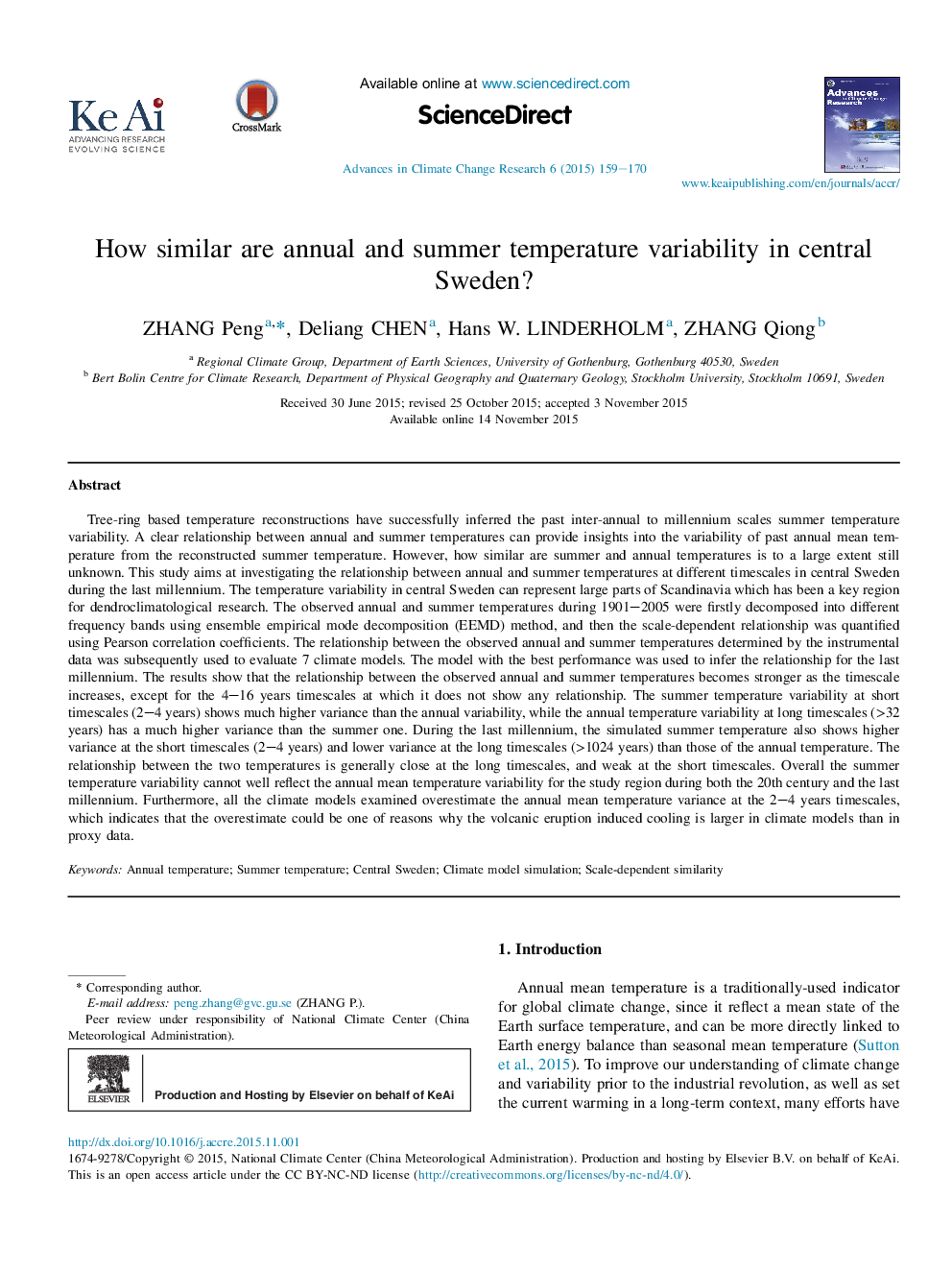| Article ID | Journal | Published Year | Pages | File Type |
|---|---|---|---|---|
| 4673571 | Advances in Climate Change Research | 2015 | 12 Pages |
Tree-ring based temperature reconstructions have successfully inferred the past inter-annual to millennium scales summer temperature variability. A clear relationship between annual and summer temperatures can provide insights into the variability of past annual mean temperature from the reconstructed summer temperature. However, how similar are summer and annual temperatures is to a large extent still unknown. This study aims at investigating the relationship between annual and summer temperatures at different timescales in central Sweden during the last millennium. The temperature variability in central Sweden can represent large parts of Scandinavia which has been a key region for dendroclimatological research. The observed annual and summer temperatures during 1901–2005 were firstly decomposed into different frequency bands using ensemble empirical mode decomposition (EEMD) method, and then the scale-dependent relationship was quantified using Pearson correlation coefficients. The relationship between the observed annual and summer temperatures determined by the instrumental data was subsequently used to evaluate 7 climate models. The model with the best performance was used to infer the relationship for the last millennium. The results show that the relationship between the observed annual and summer temperatures becomes stronger as the timescale increases, except for the 4–16 years timescales at which it does not show any relationship. The summer temperature variability at short timescales (2–4 years) shows much higher variance than the annual variability, while the annual temperature variability at long timescales (>32 years) has a much higher variance than the summer one. During the last millennium, the simulated summer temperature also shows higher variance at the short timescales (2–4 years) and lower variance at the long timescales (>1024 years) than those of the annual temperature. The relationship between the two temperatures is generally close at the long timescales, and weak at the short timescales. Overall the summer temperature variability cannot well reflect the annual mean temperature variability for the study region during both the 20th century and the last millennium. Furthermore, all the climate models examined overestimate the annual mean temperature variance at the 2–4 years timescales, which indicates that the overestimate could be one of reasons why the volcanic eruption induced cooling is larger in climate models than in proxy data.
